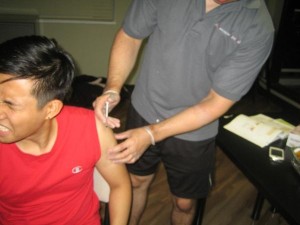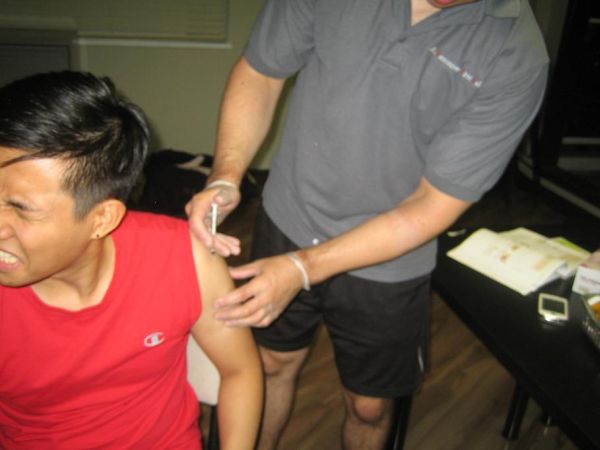Poisoning defined

- To remove or inactivate the poisonous substance before it can be fully absorbed in the system.
- To administer specific antidote treatment to effectively neutralize the poison.
- To provide supportive care in stabilizing vital organ function.
- To implement appropriate treatment that will help hasten the elimination of the absorb poison.
Ingested/Swallowed Poison
Ingested poison may be corrosive which can significantly damage the gastric mucosa and its underlying tissues. Common examples of corrosive poisons include alkaline and acids that when it comes in contact with the skin or mucous membranes can significantly lead to damage and health consequences. Common household alkaline products include drain and toilet bowl cleaners, non-phosphate detergents and bleach. Acidic household items include metal cleaners, rust removers, battery acid and pool cleaners.
Emergency Management
Control of airway, adequate ventilation and proper administration of supplemental oxygen are the most important procedural steps in the early management of ingested poisoning. In the absence of renal or cerebral damage, the victim’s prognosis will highly depend on effective management of circulation and respiration.
Efforts are made to determine what specific kind of substance was ingested; the estimated amount, the time elapsed since the ingestion; signs and symptoms, such as pain/burning sensations, any evidence of burns/reddening of the mouth or throat, inability to swallow, pain in swallowing, vomiting, uncontrolled drooling; age and weight of the victim and other essential information regarding their health history.
Measures instituted to remove the toxin or decrease its absorption is very vital in the approach when treating poisoning cases. If the victim ingested a corrosive poison, he/she is normally given water or milk to help dilute the substance taken. On the other hand, dilution is not a recommended approach if the victim has an acute airway obstruction resulting from edema or if there is evidence of gastric/intestinal burns or perforation. The following gastric emptying protocols are commonly instituted in the ED:
- Activated charcoal administration if the poison is identified to be chemically absorbed by the charcoal.
- Syrup of ipecac to help induce vomiting only in alert patients and must never be used with corrosive poisons.
- Gastric lavage for obtunded or unconscious individuals with the gastric aspirate to be sent to the laboratory for toxicology screening.
-
- Cathartics when appropriate.
-
The specific chemical/physiological antagonist or the antidote as a standard protocol is to be given as early as possible to undo or lessen the effects of the toxin ingested. If the use of an antidote appears to be futile and ineffective, the following procedures are used: multiple dose of charcoal, diuresis (for substances that can be excreted by the kidneys), dialysis or hemoperfusion. Dialysis or hemoperfusion is an intricate process that allows the detoxification of the blood by processing it through an extracorporeal circuit system, basically filtering the blood of its poisonous contents which cannot be solely done by the body’s own kidneys without further damaging it.

